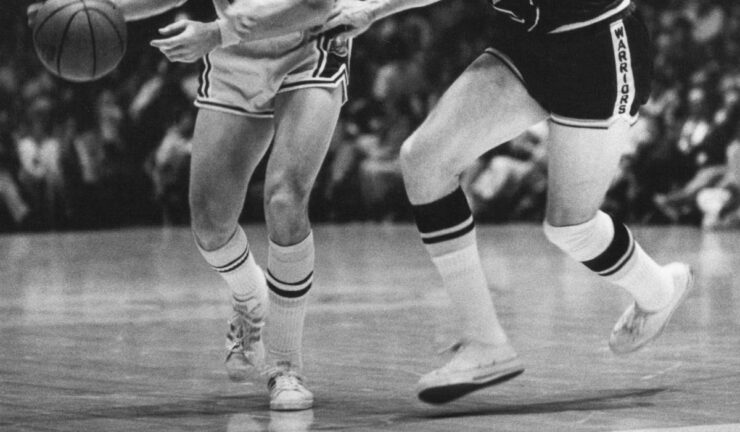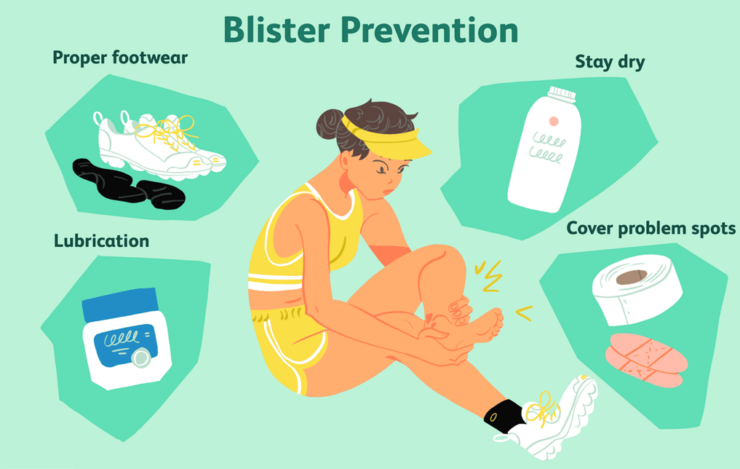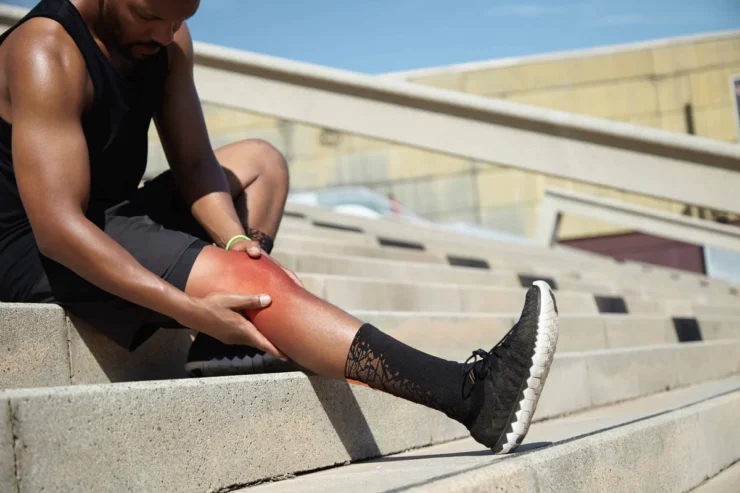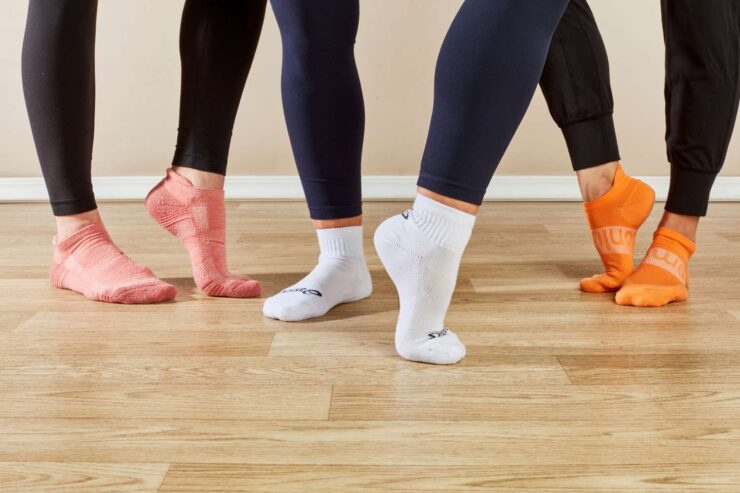Table of Contents
Long sports socks, often extending to the knee or just below, have not only carved a niche for themselves in the world of sports but have also strutted their way into the high streets of fashion. Originally viewed as a simple accessory to shield from cold or dirt, their significance has been redefined. Athletes rely on them for performance enhancement while fashion-forward individuals embrace them for their style quotient. Their aesthetic versatility is undeniably attractive, however, this article aims to spotlight the less sung, but equally important, functional attributes of these elongated socks.
The History of Sports Socks

Tracing the journey of sports socks takes us back to ancient times. Civilizations like the Greeks and Romans had their rudimentary sock versions, which were indispensable during prolonged marches or athletic events. Fast-forwarding to the 20th century, the explosion of sports like soccer, baseball, and basketball in the public consciousness necessitated attire tailored to these sports’ unique demands.
Depending on the climate and sport, woolen socks became sought-after for their warmth, while cotton variants were favored for breathability. Now, with the leaps in technological advancements and fabric research, the modern sports sock is a marvel that marries style with unmatched functionality.
Materials Matter: Choosing the Right Fabric
The fabric choice in sportswear is often the linchpin for performance. Consider the magic of moisture-wicking fabrics such as polyester or proprietary blends. These materials actively pull sweat away, ensuring feet remain in a dry environment. For athletes, this feature is not a luxury but a necessity, as the damp environment is an invitation for blisters or even fungal diseases.
Beyond moisture management, these materials stand resilient against repeated stretching, safeguarding the sock’s structural integrity. Other fabrics in the mix, like nylon and spandex, bestow the socks with the much-needed elasticity and robustness, making them indispensable for high-intensity activities.
Cushioning and Support
Long sports socks are more than just extended pieces of fabric; they are engineered for comfort. One cannot miss the plush cushioning, especially pronounced in the sole region. This cushioning acts as a shock absorber, considerably diminishing the toll of impact on the feet. But it’s not just about softness
. The design brilliance lies in their strategic compression zones, purposefully placed to offer arch and ankle reinforcement. This duality prevents harmful overextensions and substantially decreases injury risks. In essence, the fusion of cushioning and targeted support gifts athletes the dual treasures of comfort and stability.
Preventing Blisters and Chafing

Engaging in rigorous sports means the feet and legs are in constant motion, making them vulnerable to friction. This friction is the precursor to the dreaded blisters that can hamper performance. Enter long sports socks. Their design, especially those boasting seamless toes, drastically cuts down friction. Moreover, they form a protective layer, guarding the leg from potential chafing – a frequent irritant when skin repeatedly brushes against sporting equipment or against other skin parts. By ensuring a dry, friction-minimized environment, these socks play a pivotal role in making physical exertions painless.
Temperature Regulation
The tech embedded within sports socks is a testament to modern engineering. They are climate adaptive. In the blistering heat, their moisture-wicking prowess prevents the foot from becoming a furnace. Contrastingly, in colder terrains, they act as thermal insulators.
Some avant-garde brands have even integrated phase-change materials into their designs. These materials have the remarkable ability to absorb, store, and release heat based on external conditions and body needs, promising a consistently comfortable foot temperature irrespective of external fluctuations.
Compression Benefits
The realm of compression socks, a specialized subset of long sports socks, is fascinating. Designed with a gradient compression approach, they’re snugger around the ankle, gradually loosening as they ascend the leg. This design aids in channeling oxygen-rich blood efficiently to the muscles, thereby alleviating fatigue. An added boon?
They accelerate the removal of lactic acid, a primary culprit behind post-exertion muscle soreness. No wonder they’ve become the best friends of many athletes, especially marathoners, aiding in both enhanced performance and recovery.
Protection for Shin Splints

Shin splints, characterized by agonizing inflammation along the shinbone, are the nemesis of many athletes. Here again, long sports socks come to the rescue. Their compression attributes reduce the jarring oscillation of calf muscles, bringing down the strain exerted on the shin.
For those particularly susceptible to shin splints, socks fortified with additional shin padding are a godsend. Not only do they offer an added layer of protection, but they also serve as cushions, providing pain relief.
Athletic Performance Enhancement
Professional athletes, from soccer players to sprinters, sport long socks, and this is not a mere style statement. These socks, with their slew of individual benefits, synergistically elevate overall performance.
By ensuring foot and leg stability, modulating temperature, and streamlining blood flow, they act as catalysts, pushing athletes a step closer to their peak performance. In a realm where milliseconds and millimeters matter, these socks could very well be the game-changer.
Foot Arch Support
The arch of the foot, while unassuming, is foundational for balance and efficient foot mechanics. However, it’s often left unsung and unsupported. Long sports socks rise to the occasion with integrated arch support, evenly distributing foot pressure, deterring overpronation, and substantially reducing the risk associated with plantar fasciitis. This commitment to supporting the foot’s natural structure not only ensures healthier feet but also augments stability during high-octane physical bouts.
Choosing the Right Fit

Size matters, especially when it comes to sportswear. An ill-fitting sock can spell disaster, either constricting circulation if too tight or leading to fabric bunching and consequent discomfort if too loose. For reaping the maximum benefits, it’s imperative to choose a sock that fits like a second skin, hugging without choking. Fortunately, most brands offer comprehensive sizing charts. A quick measure of your foot can be the deciding factor between an uncomfortable ordeal and a performance-boosting experience.
Conclusion
Long sports socks, while often heralded for their aesthetic appeal, are powerhouses of functionality. Every design element, every fabric choice speaks to the athlete’s multifaceted needs. As you scout for your next pair, it’s imperative to prioritize functionality over mere appearance. After all, the right pair could very well bridge the gap between a commendable effort and a record-breaking feat. Remember, when it comes to these socks, it’s a harmonious ballet of fashion meeting function at its zenith.

